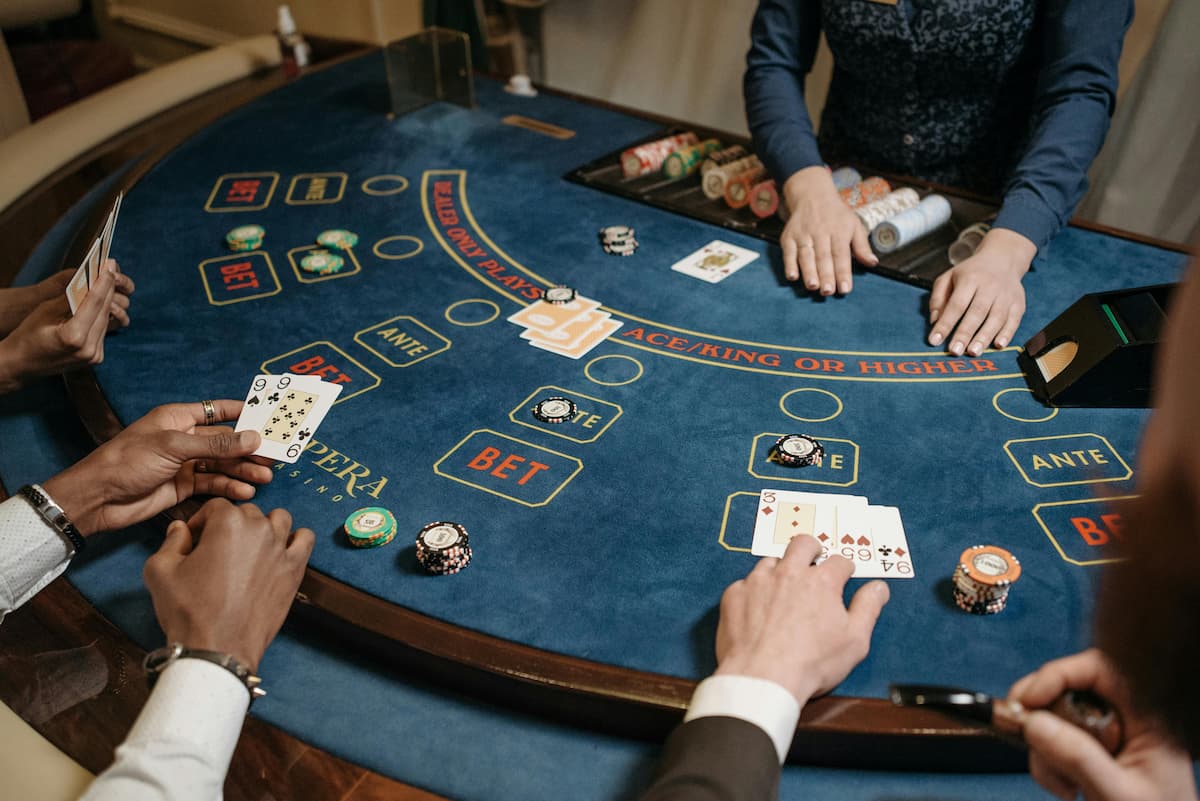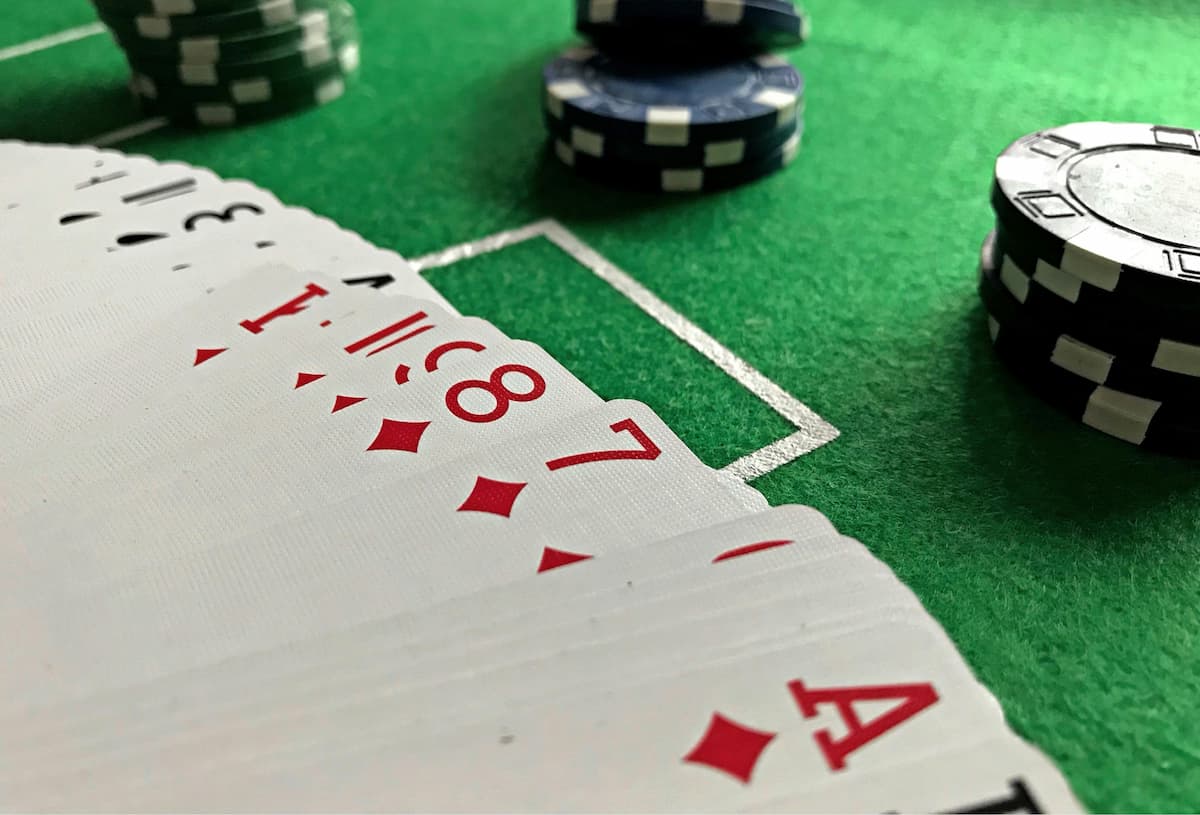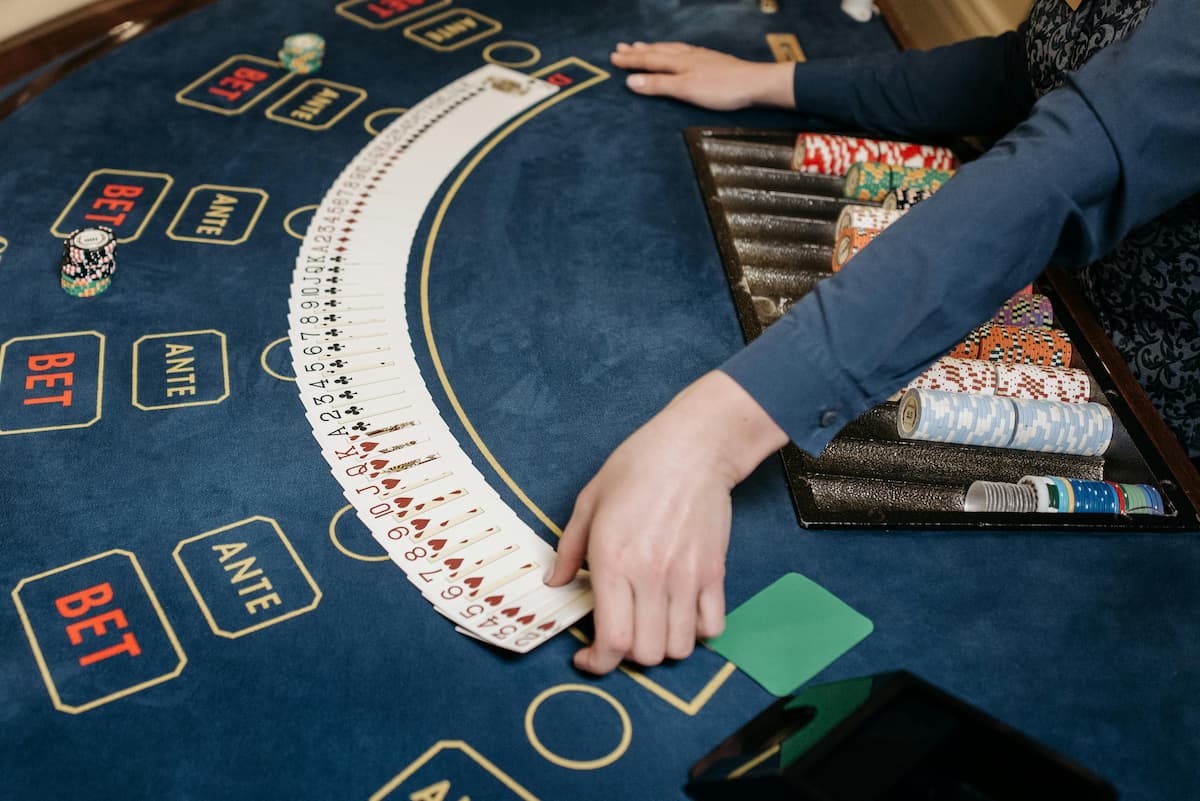Blackjack Strategy – Tips that Actually Work
 Blackjack remains the most popular card game you can play at casinos. It’s a simple game, as all you need to beat the dealer is to have a hand close to 21 without surpassing it. However, to improve your winning chances, you’ll need a reliable blackjack strategy. Over the years, casino players have developed and used different techniques at the blackjack table. Although there is no perfect blackjack strategy, in this article, we’ll discuss the best ones.
Blackjack remains the most popular card game you can play at casinos. It’s a simple game, as all you need to beat the dealer is to have a hand close to 21 without surpassing it. However, to improve your winning chances, you’ll need a reliable blackjack strategy. Over the years, casino players have developed and used different techniques at the blackjack table. Although there is no perfect blackjack strategy, in this article, we’ll discuss the best ones.
Blackjack Basic Strategy Chart

If you’re new to the blackjack table, the basic strategy chart is one of the best ways to get started. The technique traces its origin to the 1950s when it was invented by four US Army engineers — Roger Baldwin, Wilbert Cantey, Herbert Maisel, and James McDermott. Indeed, many players attest that the blackjack basic strategy chart is reliable when deciding whether to hit or stand, double down, split pairs, or surrender. Let’s explain how it works.
How to Read the Blackjack Chart
There are a few variations of the blackjack chart for basic strategy. However, here are general tips on how to read it:
- Hands and Dealer’s Upcard. The first thing you’ll usually see on a blackjack chart — at the top — is “Dealer Upcard.” Then, the player’s or hands upcard is located at the left axis. Basically, they refer to the values on the player and dealer cards after they’re dealt.
- Color-Coded Cells. You’ll notice that some cells on the blackjack strategy chart are colored. Each color represents a particular action — hit, stand, double, or split. The exact action a color depicts will vary from chart to chart, but you’ll usually find instructions at the bottom that provide direction.
- Letters. Colors mainly serve to differentiate the different actions. However, the letters within the cell are what truly tell you what action to take. You’ll usually find H to mean Hit, S as Stand, D for Double, and Y to imply Split.
- Soft Hands and Hard Hands. On some charts, you’ll find these as soft and hard totals, and both are usually separate sections. Hard hands have regular numbers, but soft hands are totals with an Ace counted as 11.
- Pair Splitting. A third section after the Hard and Soft Totals is Pair Splitting. It guides what actions to take if you receive two cards of the same rank. For instance, if you receive 7,7, or 5,5 from the initial hand, you’ll want to check the Pair Splitting section for what to do next.
- Surrender. Some blackjack basic strategy charts will have a final section labeled Surrender. As you’d expect, it tells you when to surrender based on your hand and the dealer’s upcard. Generally, Surrender is an optional rule in some blackjack variants. It lets you forfeit half your bet and end the round before or after the dealer checks his hand.
Main Takeaways from Basic Blackjack Strategy
With the basic blackjack strategy chart, there are some essential takeaways to note. First, note that the chart depends solely on statistics. In other words, you can use it to make the most favorable decision based on your hand and the dealer’s upcard value.
However, note that the blackjack basic strategy chart doesn’t guarantee that you’ll always win. Instead, it helps minimize the house edge since you take the most optimal action. Notably, if you follow the chart, you may have better chances of winning long-term and having higher payouts as the odds improve.
Another key takeaway from this is that it helps you become more familiar with the card game. You get to understand soft and hard totals, pair splitting, and surrender. Interestingly, most charts don’t recommend any action for insurance — suggesting you should never take it.
No strategy is fool-proof, so always remember to gamble responsibly and never bet more than you can afford to lose.
Most Common Confusions With the Chart
It’s important to read the basic chart carefully, or else you may make mistakes. With the many cells, colors, and letters it features, things can get confusing. You’ll want to avoid such confusion if you’re going to leverage the chart’s suggestions to win.
One common mistake players make with the chart is misreading the Ace. In blackjack, the A card can be counted as 1 or 11. If you find A in the Hard Totals section of the chart, know that it counts as 1. On the other hand, in the Soft Totals section, an A is 11. Some players make the mistake of reading S as split instead of stand. On the blackjack chart, the common letter for split is Y, and S is always to stand.
Furthermore, some charts have two types of double: D and Ds. You may find this confusing, as they have different means. D typically means you should double, but if it’s not allowed, you hit. Meanwhile, with Ds, you’ll stand if doubling isn’t allowed. You can easily avoid confusion with the chart by checking the Key section to know what each letter and color represents.
How Blackjack Basic Strategy Works
The basic strategy blackjack players use mainly involves reading the chart. It’s straightforward. You check the left axis for your hand value and the top axis for the dealer’s upcard value. Then, trace the cell connecting the row and column to know what action to take.
For instance, suppose the dealer’s upcard is 3, and you receive an A and 6. That means you have a Soft Total since the Ace becomes 11, and your total hand value is 17. If trace A, 6 on the left axis to 3 at the top, the corresponding cell is D. That means you’ll double — or hit if doubling isn’t allowed.
In a different scenario, suppose the dealer’s upcard is 4, and you get a hard 16. If you trace 16 on the left axis and 4 at the top, you’ll get an S, meaning you’ll Stand.
Order of Operations in Basic Strategy
You don’t always have to check the chart to make decisions when using the basic blackjack strategy. Sometimes, it can be time-consuming. A smarter route is to learn the order of operations so you can quickly make your move after the cards are dealt. Let’s discuss these:
When to Surrender
Surrendering can help you get back half your bet instead of losing it all if the dealer wins. Usually, you can only surrender after receiving your first two cards. The option becomes unavailable if you hit and get a new card.
If the option is available, you may want to use it when your hand is significantly weaker than the dealer’s upcard. Another option is to surrender if your hand value is too high while that of the dealer is balanced. In such a situation, hitting may increase your hand above 21, and the dealer wins.
When to Split
According to the basic blackjack strategy, splitting is only recommended when you have a pair. If your pair had high values — from 6,6 to A, A — the best option is to split. However, if it’s T, T, or 5,5, the recommendation is not to split regardless of the dealer’s hand.
You can also skip splitting if you have a 6,6 or 7,7 pair when the dealer’s upcard is between 7 and A. The same applies to low-value pairs — between 2,2 and 4,4 — as you typically split when the dealer has a low-value upcard.
When to Double
Doubling is one of the best actions when using the basic blackjack betting strategy. Usually, if the hands call for a double, it means you’re likely to win. It’s worth noting that you can double when you have soft and hard totals.
The best soft totals for doubling are hands from A,2 to A,7. In particular, you can double if the dealer’s upcard is between 3 and 6. If doubling isn’t allowed, the next best option is to hit. However, if your hand is exactly A,7, you can choose to stand.
When to Hit or Stand
Generally, in blackjack, you hit when you need an extra card to beat the dealer. However, if you’re confident your current hand can win, you’ll stand. The basic strategy recommends standing if you have a high hand value when the dealer’s upcard value is low.
Meanwhile, if your hand and that of the dealer’s upcard are close, hitting is the better option. Generally, you should hit if the total value of your hand is low enough that there is a small risk of busting (going over 21) and you have an opportunity to improve your hand.
Common scenarios where hitting is advisable include having a hand total of 11 or less, as you cannot bust with a single additional card. For hand totals of 12 to 16, the decision to hit often depends on the dealer’s upcard. If the dealer’s upcard is 7 or higher, hitting is usually the safer bet to improve your hand, as the dealer has a strong chance of having a higher total. However, if your hand is 17 or higher, it’s generally safer to stand, as the risk of busting increases significantly.
Keep in mind that these guidelines can vary depending on the specific rules of the blackjack game you are playing and the strategies you choose to employ
Advanced Blackjack Strategies
Away from the basic strategy, top blackjack players apply more advanced approaches to win at the table. These techniques require you to have a deeper understanding of the game, and they can be effective. Check out the popular ones below:
Card counting
This advanced blackjack strategy involves tracking the number of cards dealt and those left in the deck. You’re comparing whether the dealer has dealt more low or high-value cards compared to the ones left. With such information, you can make better decisions regarding your bets.
You’ll find different types of card counting systems in blackjack. However, the most popular ones include Hi-Lo and KO. The primary difference between each is the value they assign while calculating, but they’re all level-1 card counting systems. Level 1 implies that, while calculating the count, the result is either -1, 0, or 1. There are multi-level systems like Hi-Opt II and Omega II that assign -2 and 2.
Many experts consider card counting the perfect strategy blackjack players can leverage. Indeed, it lowers the house edge and can improve your chances of getting more from your bets. As a result, some casinos don’t allow it. However, there’s no general rule that classifies it as illegal.
Shuffle tracking
With shuffle tracking, the target is predicting the location of specific cards. From the description, how it works is easy to grasp. You monitor the cards as the dealer picks them up from the table and shuffles. If your tracking is accurate, you can tell which card on the deck is low or high value.
This is a complex blackjack strategy. You’ll first need to know how to card count; then, you must have good memory skills to recall which card is which. However, mastering the technique comes with many upsides. It can help with sizing your bets or deciding whether to hit or stand. Of course, if you know the value of the next card on the deck, you’ll know if it’ll improve your hand to beat the dealer.
Hole carding
Here’s a technique that involves predicting the dealer’s face-down card — the hole card. The dealer’s primary edge in blackjack is that one card is revealed while the other is not. So, as a player, you can only make decisions based on one card value and not the dealer’s total hand. However, if you apply the hole carding strategy, the dealer no longer has any advantage.
As a result, hole carding is generally prohibited in most casinos. Many players have had to leave the table to apply this advanced strategy.
Ace sequencing
Aces are one of the best cards you can receive while playing blackjack. The main reason is that they can take on two values: 1 or 11. As a result, having an A in your hand introduces flexibility. This is why many expert players turn to ace sequencing as a winning strategy.
The technique involves counting and tracking aces. In other words, applying the strategy means you’ll know when the dealer will likely deal an A card. If you know an ace will be dealt, you may increase your bet if it means you’ll get a blackjack.
Back-counting
Also known as Wonging, back-counting is a strategy where players sit back and observe the game. So, you’re at the table, but you’re not betting. Instead, you’re monitoring the cards on the deck, and if things appear favorable, you join in.
With a blackjack betting strategy like back-counting, you can minimize losses. As stated, you observe and only bet when the cards to be dealt will favor your hand. However, not many casinos will allow you close to the table if you’re not gambling.
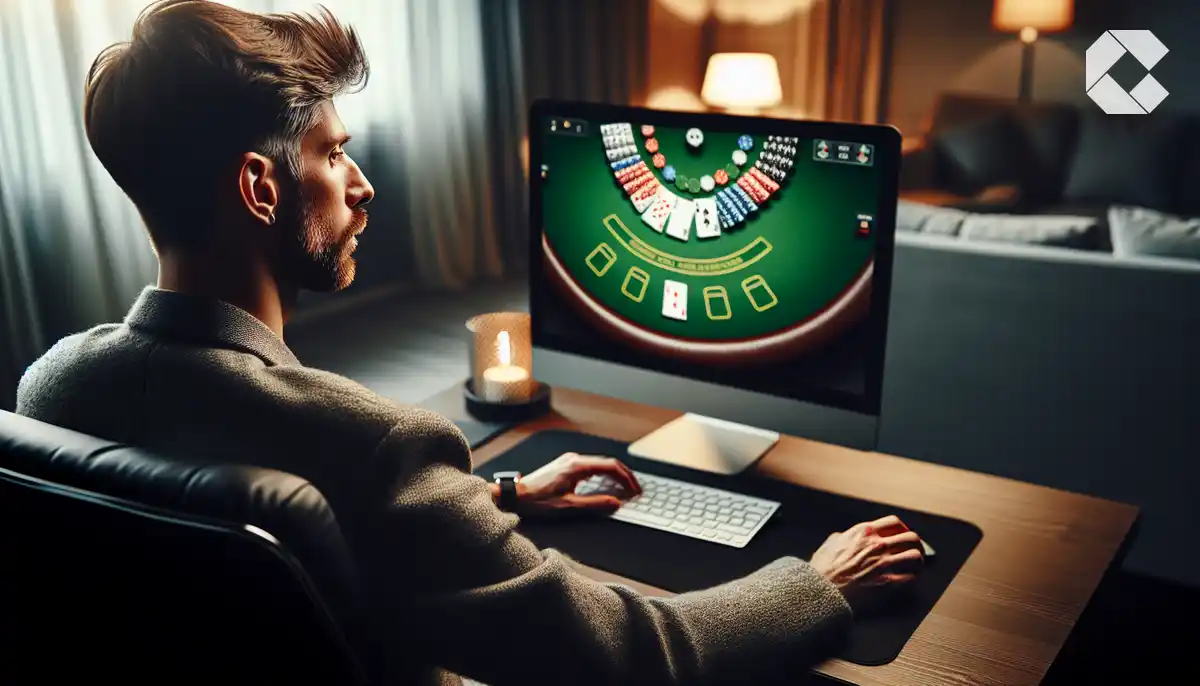
Playing Blackjack Online vs In-Casino
Blackjack’s ultimate winning rule doesn’t change — get a hand close to 21, but don’t surpass it. However, there are significant differences when you play online and at a land-based casino. Let’s discuss these differences to know which is more worthwhile.
Convenience
Without question, it’s more convenient to play blackjack online than at a land-based gambling house. You can access the card game at online casinos at your convenience using your smartphone or computer. Meanwhile, you must visit the land-based casino to join the table.
Game variety
Online casino blackjack is typically available in many variants. That’s because there are 100s of software providers, and each one aims to introduce a unique feel to their titles. Meanwhile, at traditional casinos, you won’t get much variety. However, you may be able to enjoy personalized gaming at in-house tables.
Game speed
Some blackjack players prefer taking things slow, while others appreciate fast rounds. If you’re the former, land-based casinos are ideal as things are more relaxed. You’ll have time to apply the blackjack basic strategy and even advanced ones. On the contrary, things are pretty rapid at online blackjack tables as rounds restart automatically. Nevertheless, you can always pause the game before placing your next bet.
Applying strategy
You can only apply the basic blackjack strategy at online casinos by comparing your hand and the dealer’s upcard. The shuffling and card dealing are digital and use Random Number Generators (RNGs). As a result, it’s challenging — impossible even — to apply advanced strategies like card counting. You’ll record more success with advanced blackjack strategies when you bet in-house.
How to Choose Blackjack Games
So far, the techniques we’ve discussed involve making moves while the game is ongoing. However, you can improve your chances of winning at 21 by initially picking the right table. In that view, here are tips to help you scout blackjack tables:
Check the betting limits
Different blackjack tables — both online and in-house — have varying bet limits. It may not directly impact your strategy, but it determines if you can participate. Joining a table and discovering that the minimum bet exceeds your bankroll can be embarrassing. Conversely, you may be a high roller and have to switch tables if the maximum bet doesn’t suit your preferences.
Confirm the number of decks
House edge is constant in casino games. As a player, it’s best when the edge is at its lowest, as it means you get more winning chances. That’s why you should check the number of decks when scouting tables, as more decks mean a higher house edge. To keep things in your favor, go for single-deck or double-deck blackjack. The good news is that these variants are popular at online and land-based casinos.
Compare the payout ratio
How much you receive from your winning hands can vary depending on the blackjack table. For example, while some variants pay 3:5 for a blackjack (the standard), others have 6:5. You’ll even find video blackjack machines that pay 1:1 when your hand equals 21. So, you’ll want to compare the payout ratio of different tables and pick the most favorable.
Review the house rules
It can be disappointing when you can’t use your blackjack strategy because the house rules don’t support them. For this reason, ensure you read through the gameplay requirements before picking a blackjack table to play. Particularly, confirm if and how the game supports actions like Surrender, Split, and Double. If using advanced strategies like card counting, you should verify that the house rules don’t prohibit them.
Tips for Winning at Blackjack
You can follow the below expert tips to improve your chances of winning at blackjack:
- Master the basic strategy. The basic blackjack strategy can always serve as a guide on what move to make next. It’ll suggest the most favorable action as far as statistics is concerned. Therefore, if you master it properly, you’ll always know what to do after receiving the initial cards.
- Double your bet if you have a total of 11. Having 11 in blackjack is a strong position, as you can hardly burst. If you hit, you can get anywhere between 2 and 10, and if it’s an Ace, you simply count it as 1. So, consider doubling your bet before hitting to make more profits if the next card has a high value.
- Understand the house rules. You can’t win if you play against the house rules. By default, you can’t play against the rules with online blackjack since they’re automated. However, if it’s at a land-based casino, you may be asked to leave or receive a penalty. Therefore, check what the blackjack variant permits, especially in terms of surrendering, doubling down, and splitting.
- Use bonuses and promotions. If you’re playing at an online casino, it helps to leverage any available bonus that supports blackjack games. The offers can boost your bankroll and give you more playing time.
- Learn from your mistakes. One helpful blackjack strategy you can employ if you want to win is tracking your mistakes. That way, you can develop your unique style of play based on experience and have better odds when you face the dealer.
Common Mistakes in Playing Blackjack
While you aim to apply strategy to win at blackjack, you should also avoid mistakes that can put you at a disadvantage. You can find the most common ones to avoid below:
- Avoid making insurance bets. You’ll hardly get substantial benefits when you make insurance bets because it increases the house’s edge. In the long run, you’ll lose more money than such bets can yield.
- Don’t ignore the dealer’s upcard. Some players focus more on their hand and pay less attention to that of the dealer. Even if you appear to be in a strong position and a hit will give you a blackjack, consider the upcard before deciding. That’ll ensure you don’t miss anything.
- Don’t count cards online. If you’re an expert, you can profit from counting cards at land-based gambling houses. However, at online casinos, it’s pointless because the rounds are automatic. You’ll only waste your time and be distracted instead of focusing on improving your hand.
- Don’t double down all the time. Doubling can be highly rewarding when you have a strong hand. But it’s not something to do consistently, or you’ll empty your bankroll. Sometimes it’s best to finish the round with your initial bet.
- Don’t play blackjack variants with low payout ratios. The standard payout for blackjack is 3:5, so if you bet $10, you can get $15 if you win. With low payout variants like 6:5, you’ll get only $12 for a $10 bet. So, it’s best to stick to the standard or higher variants to maximize your profits.
Blackjack Strategy FAQ
What is the best blackjack strategy?
The best blackjack strategy depends on the variant you’re playing. You can employ strategies like following the basic chart, Martingale, counting cards, or shuffle tracking.
Do you hit or stay on 16?
You can hit or stay on 16, depending on the dealer’s upcard. Generally, if the dealer has a weak upcard, you should start since 16 is a high number. However, if the dealer’s upcard is between 7 and A (11), hitting becomes more suitable.
Do you hit 12 against a 2?
Yes, you can hit 12 against a 2 if you follow the basic strategy when playing blackjack. That’s because the dealer having a weak upcard means they can bust. At the same time, still consider the specific rules of the blackjack variant before deciding whether to hit 12 against a 2.
What is the trick to winning blackjack?
The trick to winning blackjack varies depending on your playing style. Some players follow the blackjack basic strategy chart, while others go for advanced methods like the Martingale system. However, there’s no general trick to beating the dealer, as luck is always involved.
How do you win consistently in blackjack?
You can win consistently in blackjack by applying reliable strategies. That’s because the game involves skill and strategy. However, still note that it’s gambling, so there’s no 100% guarantee that you’ll always win.
References
- Blackjack – New Hampshire Gaming Commission
- Optimal Blackjack Strategy – Texas A&M University
- Blackjack and Probability – Chongwu Ruan







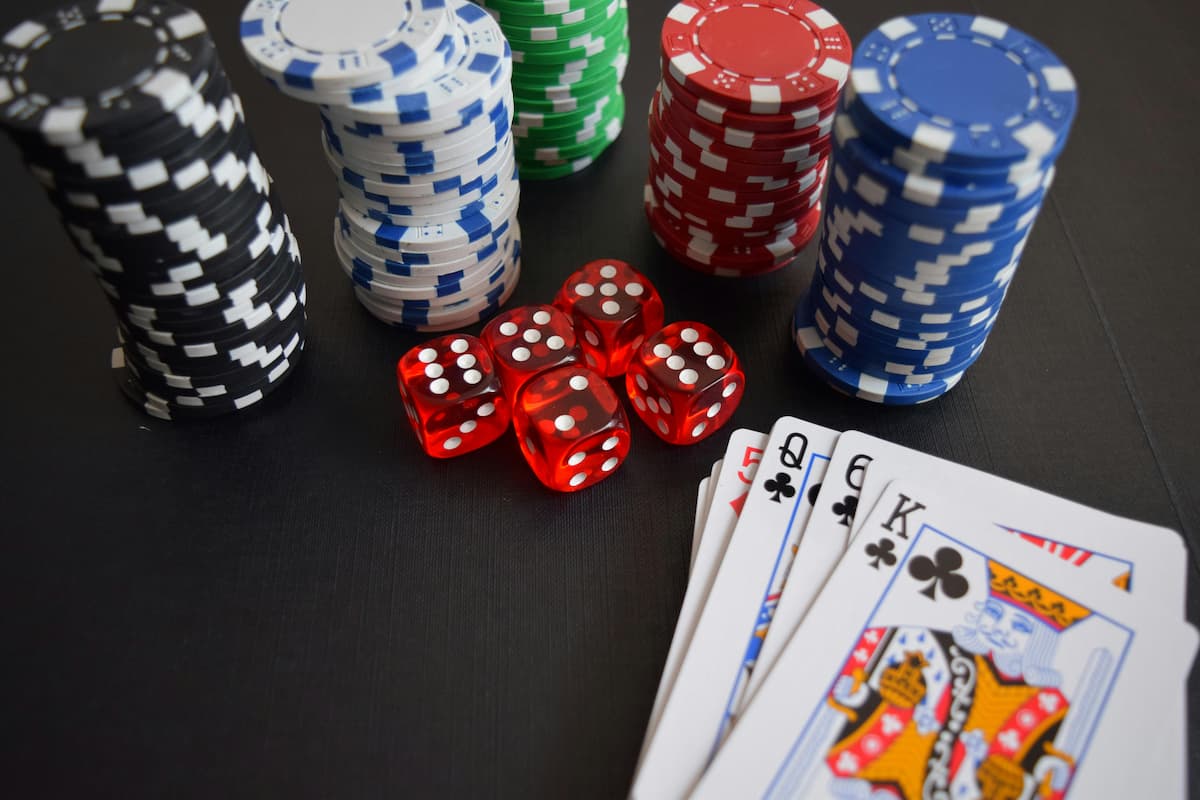
 Nick Pappas
Nick Pappas 